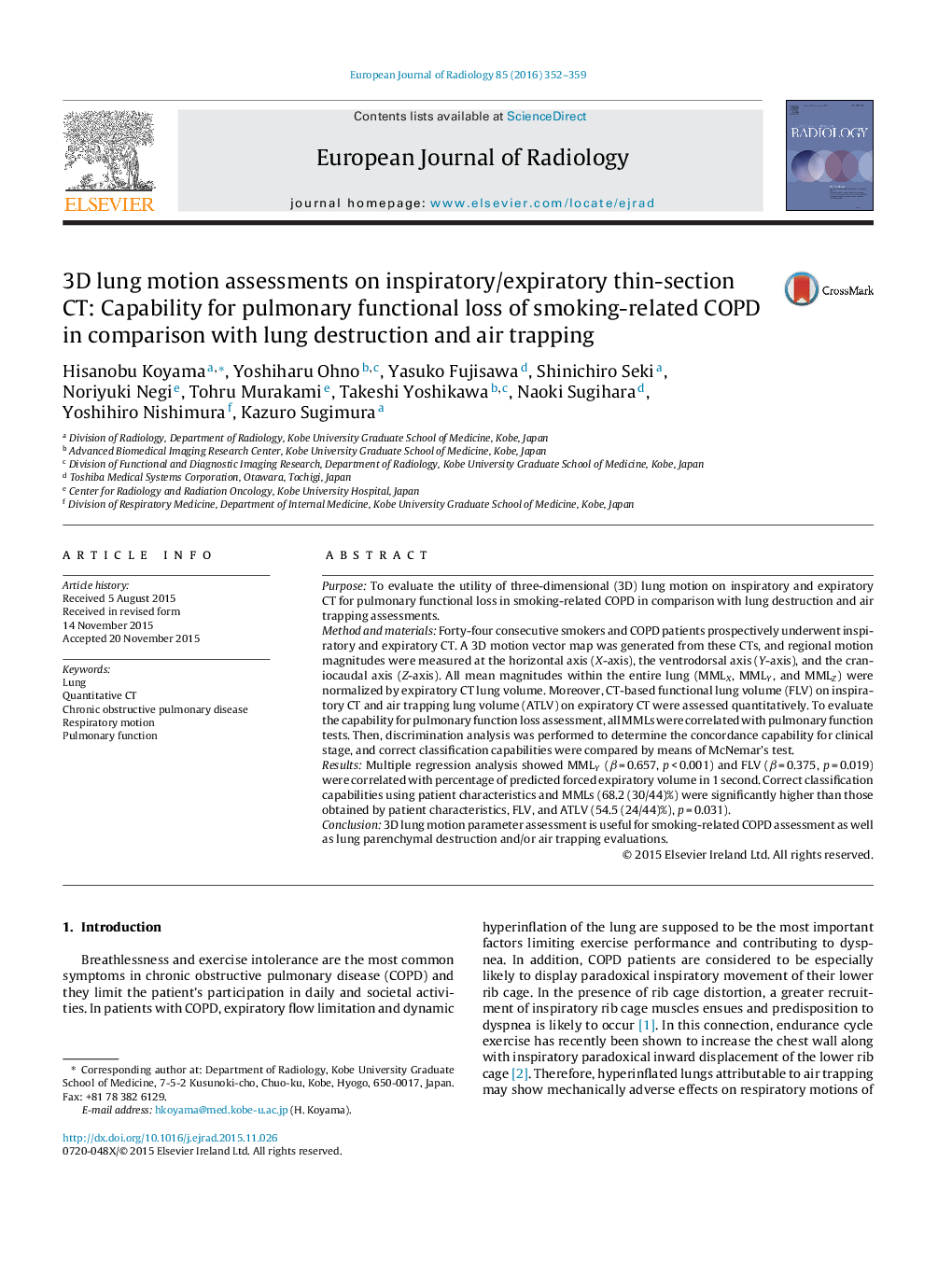| کد مقاله | کد نشریه | سال انتشار | مقاله انگلیسی | نسخه تمام متن |
|---|---|---|---|---|
| 4225085 | 1609745 | 2016 | 8 صفحه PDF | دانلود رایگان |

• Craniocaudal-axis motions have significant correlations with functional lung volume.
• Ventrodorsal-axis motion has significant correlations with pulmonary function test.
• Lung motion parameters have closing relationships with clinical COPD stages.
PurposeTo evaluate the utility of three-dimensional (3D) lung motion on inspiratory and expiratory CT for pulmonary functional loss in smoking-related COPD in comparison with lung destruction and air trapping assessments.Method and materialsForty-four consecutive smokers and COPD patients prospectively underwent inspiratory and expiratory CT. A 3D motion vector map was generated from these CTs, and regional motion magnitudes were measured at the horizontal axis (X-axis), the ventrodorsal axis (Y-axis), and the craniocaudal axis (Z-axis). All mean magnitudes within the entire lung (MMLX, MMLY, and MMLZ) were normalized by expiratory CT lung volume. Moreover, CT-based functional lung volume (FLV) on inspiratory CT and air trapping lung volume (ATLV) on expiratory CT were assessed quantitatively. To evaluate the capability for pulmonary function loss assessment, all MMLs were correlated with pulmonary function tests. Then, discrimination analysis was performed to determine the concordance capability for clinical stage, and correct classification capabilities were compared by means of McNemar’s test.ResultsMultiple regression analysis showed MMLY (β = 0.657, p < 0.001) and FLV (β = 0.375, p = 0.019) were correlated with percentage of predicted forced expiratory volume in 1 second. Correct classification capabilities using patient characteristics and MMLs (68.2 (30/44)%) were significantly higher than those obtained by patient characteristics, FLV, and ATLV (54.5 (24/44)%), p = 0.031).Conclusion3D lung motion parameter assessment is useful for smoking-related COPD assessment as well as lung parenchymal destruction and/or air trapping evaluations.
Journal: European Journal of Radiology - Volume 85, Issue 2, February 2016, Pages 352–359